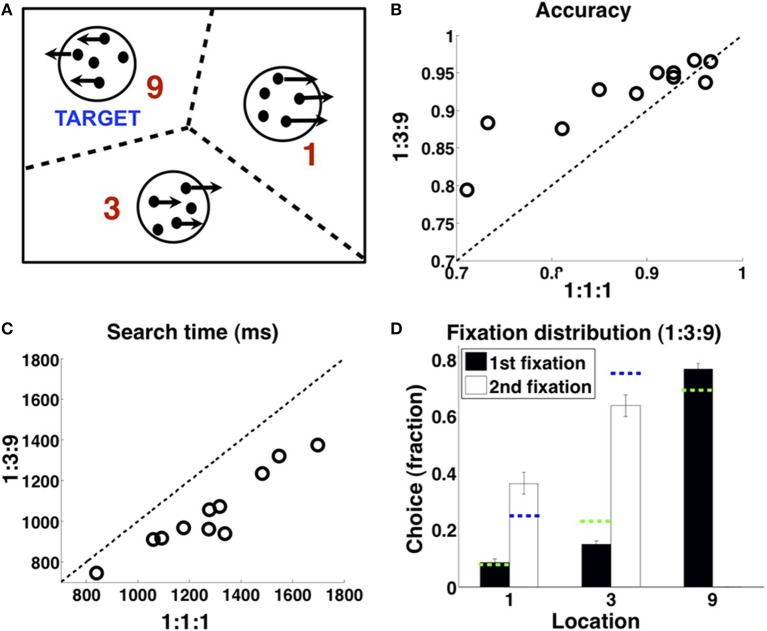Figure 2.
Experimental design and data. (A) On each trial, two of the random-dot stimuli are distractors, one is the target; subjects must find the target (see Methods). (B) Subjects are more accurate in finding the target in the 1:3:9 condition than the 1:1:1 condition, and (C) faster. (D) 1:3:9 condition, allocation of fixation location on first fixation (black), and second fixation when subjects first fixated the 9 location and found that it was not the target (white), averaged over all subjects. Green dashed lines indicate the matching probabilities on the first fixation, (1/13, 3/13, 9/13); blue dashed lines indicate matching probabilities on the second fixation, (1/4, 3/4). n=11. Errorbars: s.e.m. across subjects. Adapted with permission from Yu and Huang (2014). Copyright © 2014 by the American Psychological Association.

